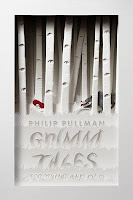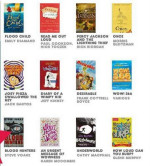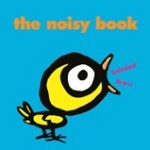Philip Pullman
(Penguin)
For his Grimm Tales for Young and Old, Philip Pullman has selected fifty of his favourite tales and has rewritten them, and brought them up to date, in language at least.
Pullman is no stranger to spinning his own versions of fairy and traditional tales. No doubt readers will be familiar with his Aladdin, or a personal favourite of mine, I Was A Rat. What is particularly interesting about his tackling the Grimms’ tales is his conscious decision to be a storyteller without a voice, and by this I mean that the storyteller recalls the story without any personal input. The tales need no embellishments according to Pullman and therefore each story is stripped bare, to its original version, but with the use of contemporary language. This means that often, the tales are not be suitable for younger audiences. Take Rapunzel for example: she falls pregnant, without knowing or realising, by her prince, who is called a “fancy-boy” by the witch. This creates intriguing combinations indeed but for those readers wanting to share these tales with children, it will definitely be wise to read them beforehand.
Each tale comes complete with a commentary at the end, which offers information on the origins of the tale, similar versions and an interesting comment from Pullman, offering his opinion on each tale. However what I find most fascinating about this book is the insightful introduction. Many might disagree, but to Pullman, there is no such thing as psychology in Grimms’ tales. This according to him, is “sub-Jungian twaddle”. The characters have no past, and are one-dimensional, with no other purpose than their role in the tale. When talking about the speed of events within each tale, Pullman writes:
The speed is exhilarating. But you can only go that fast, however,if you’re travelling light; so none of the information you’d look for in a modern work of fiction – names, appearances background, social context, etc – is present. And that, of course, is part of the explanation for the flatness of the characters. The tale is far more interested in what happens to them,or in what they make happen, than their individuality.
Pullman is such an eloquent writer, I found many of his comments captivating.
Despite what the title implies, I don’t think this collection really is for the “young”. Though it might be of interest of sixth-form literature students, this is very much a volume for adults. The lack of illustrations also makes it less attractive for younger readers, and in fact for adult readers. All readers, young and old enjoy seeing fairy-tales illustrated, I think. Nonetheless, this is an impressive, albeit unusual and slightly non-conformist, interpretation of those classic tales.
You can listen to Philip Pullman talk about the tales here.
Source: personal copy







This is on my list of books to read, as I am studying fairy tales in my MA! It’s interesting what Pullman says about the characters being flat – they certainly are – but it’s been argued that they represent stages in a child’s development from child to adult (well, if you go along with a psychoanalytical approach, which he obviously disagrees with!). I think though that since they hold such a fascination for people throughout the ages, they must have some kind of appealing psychology, Jungian or not. Thanks for reviewing this – and I will be certain to read it before letting my daughter see it!
I too looked into fairy tales briefly (Marina Warner mainly) when studying literature and was amazed ghoe different his approach was, but I can see his point. As a literature students I often wondered if maybe we read too much into the meaning of text and whether we had proof that authors meant it that way. I remember thinking this when studying Jane Eyre and learning about the psochoanalytical approach to the red room and the woman in the attic.
i really look forward to the MA module on this, I hope you are nejoying it :0)